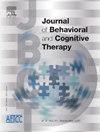文献计量学对胃酸过多的洞察力:从心理学角度看不断变化的研究趋势
IF 1.6
Q3 PSYCHIATRY
引用次数: 0
摘要
异食癖是一种多方面的饮食失调,涉及持续摄入非营养性物质,通常与重大的医疗和心理风险有关。本研究首次对异食癖进行文献计量分析,旨在巩固和检验该领域研究的广度。我们分析了来自Web of Science数据库的386份出版物,以探索与异食癖相关的不断发展的研究趋势和专题发展。通过文献耦合,我们确定了五个主题集群,阐明了异食癖的各个方面,包括神经生物学和适应机制,发育障碍的行为干预,以及进食障碍的诊断和治疗创新。与此同时,共词分析揭示了另外四个研究流,突出了营养缺乏、心理健康和自闭症谱系障碍或智力残疾患者的终身护理之间的交叉。我们的研究结果强调了异食癖的复杂性和跨学科性质,揭示了生物、心理和环境因素如何共同影响病因和治疗策略。特别是,越来越强调个性化的、基于功能的干预——从行为疗法到药物治疗——标志着临床实践向更综合的方法转变。技术辅助干预和动物模型的新兴研究进一步支持了这一点,这些研究为理解和解决异食癖在个人和群体水平上提供了有希望的途径。总的来说,这首个异食癖的文献计量综合强调了当前基于证据的早期发现和干预策略,并强调了跨临床、发展和社区背景的文化敏感、多学科框架的必要性。这些见解为未来的合作努力和有针对性的研究奠定了基础,旨在改善受这种复杂疾病影响的个人的预后。本文章由计算机程序翻译,如有差异,请以英文原文为准。
Bibliometric insights into pica: A psychological perspective on evolving research trends
Pica is a multifaceted eating disorder involving the persistent ingestion of non-nutritive substances, often associated with significant medical and psychological risks. This study presents the first bibliometric analysis on pica, aiming to consolidate and examine the breadth of research in this field. We analyzed 386 publications from the Web of Science database to explore evolving research trends and thematic developments related to pica. Employing bibliographic coupling, we identified five thematic clusters illuminating diverse aspects of pica, including neurobiological and adaptive mechanisms, behavioral interventions in developmental disabilities, and diagnostic and treatment innovations in feeding disorders. Meanwhile, co-word analysis uncovered four additional research streams, highlighting intersections between nutritional deficiencies, mental health, and lifespan care for individuals with autism spectrum disorder or intellectual disabilities. Our findings underscore the complexity and interdisciplinary nature of pica, revealing how biological, psychological, and environmental factors collectively shape both etiology and management strategies. In particular, the growing emphasis on personalized, function-based interventions—ranging from behavioral therapies to pharmacological treatments—signals a shift toward more integrative approaches in clinical practice. This is further supported by emerging research on technology-assisted interventions and animal models, which offer promising avenues for understanding and addressing pica at individual and population levels. Overall, this inaugural bibliometric synthesis of pica highlights current evidence-based strategies for early detection and intervention and underscores the need for culturally sensitive, multidisciplinary frameworks that span clinical, developmental, and community contexts. These insights lay a foundation for future collaborative endeavors and targeted research aimed at improving outcomes for individuals affected by this complex disorder.
求助全文
通过发布文献求助,成功后即可免费获取论文全文。
去求助
来源期刊

Journal of Behavioral and Cognitive Therapy
Psychology-Clinical Psychology
CiteScore
3.30
自引率
0.00%
发文量
38
审稿时长
60 days
 求助内容:
求助内容: 应助结果提醒方式:
应助结果提醒方式:


